UNITED NATIONS, June 6 (APP): The amount of aid allocated to education has been falling for six years in a row, which is a worrying situation,
the United Nations agency mandated with promoting education globally said
in a study on Tuesday.
According to a policy paper by the UN Educational, Scientific and Cultural Organization’s (UNESCO) Global Education Monitoring Report,
total aid to education stands at $12 billion – 4 per cent lower than the figure in 2010.
“Aid remains far short of what is needed to achieve Sustainable Development Goal 4, putting our commitments at risk,” Irina Bokova, the Director-General of UNESCO, said in a statement announcing the findings.
“[Resources] need to be multiplied by at least six to achieve our
common education goals and must go to countries most in need,” she cautioned, calling on donors not to shift their attention away from the poorest countries.
Based on newly released data from the Organisation for Economic Co-operation and Development’s (OECD) Development Assistance Committee,
the study revealed that aid to basic education, such as support to pre-primary and primary education, as well as adult education and literacy programmes – stands at $5.2 billion, 6 per cent lower than the amount in 2010.
It also noted that, while humanitarian aid to education reached a “historic high— – increasing almost 55 per cent from 2015 to 2016 – education received only 2.7 per cent of total aid available and less
than half (48 per cent) of the amount needed.
In terms of national contributions, the United States and the United Kingdom were the two largest donors to basic education, but their allocations fell by 11 per cent and 9 per cent respectively in
2014-2015.
In contrast, contributions from Norway and Germany increased by
50 per cent and 34 per cent respectively, noted the UN agency.
The UNESCO policy paper, Aid to Education is Stagnating and Not
Going to Countries Most in Need also voiced concern over skewed
allocations by donors leading to aid not reaching places it is
most needed.
Sub-Saharan Africa, home to over half of the world’s out-of-school children currently receives less than half the aid to basic education it used to in 2002, and only 26 per cent of the total aid to basic education globally.
This contrasts to the 22 per cent allocation to the northern Africa
and western Asia region, where 9 per cent of children are out of school.
Calling for urgent action to rectify the problems, UNESCO urged
donors to “reverse the move away from education” and focus their
attention on campaigns such as the Global Partnership for Education Replenishment campaign which is seeking to raise $3.1 billion between 2018-2020 and programmes such as the Education Cannot Wait fund
(established in 2016) that aims to raise $3.85 billion by 2020, with
the potential to tranAid to this sector currently stands at
$ 12 billion, four percent below 2010, according to figures provided
by the report ‘Aid to education is stagnating and not going to countries most in need’, prepared by an entity attached to UNESCO.
As for the amount specifically earmarked for basic education, the
amount stands at 5.2 billion dollars, six percent less than in 2010.
‘The aid is still far below the amount needed to reach Sustainable Development Goal 4 (referring to quality education), which jeopardizes
our commitments,’ Ms Bokova, the UNESCO chief, warned.




